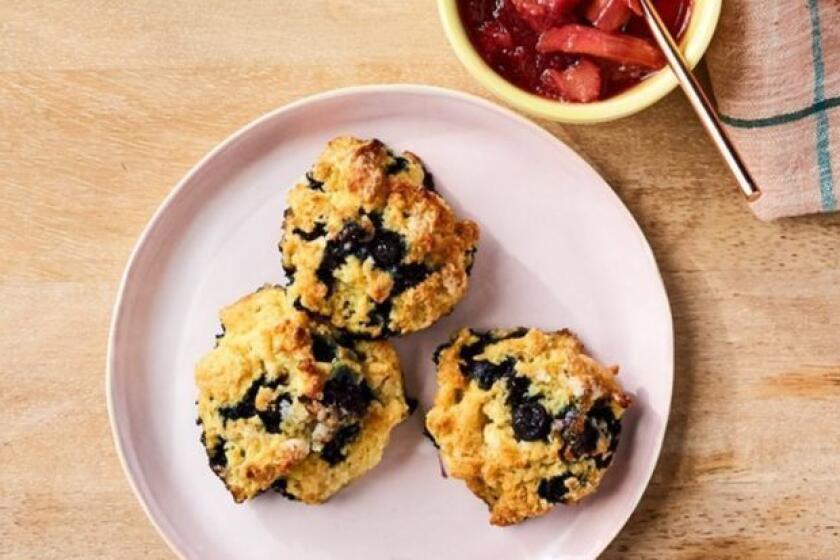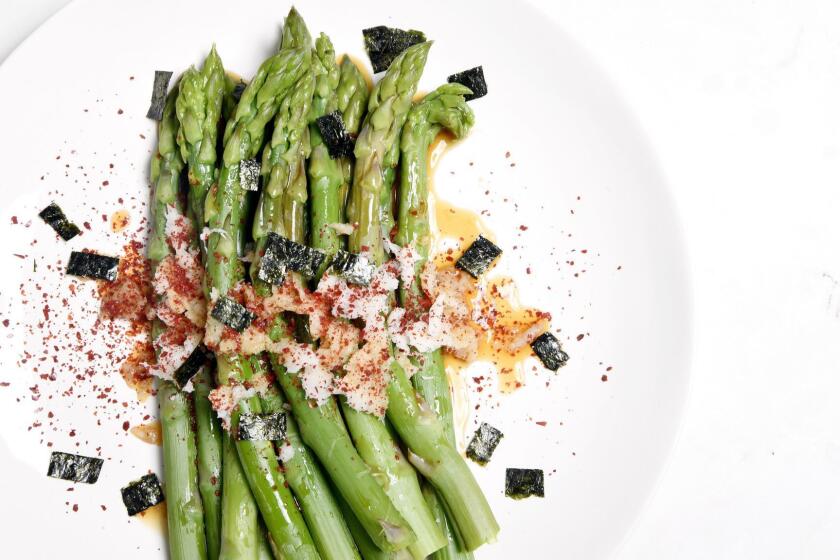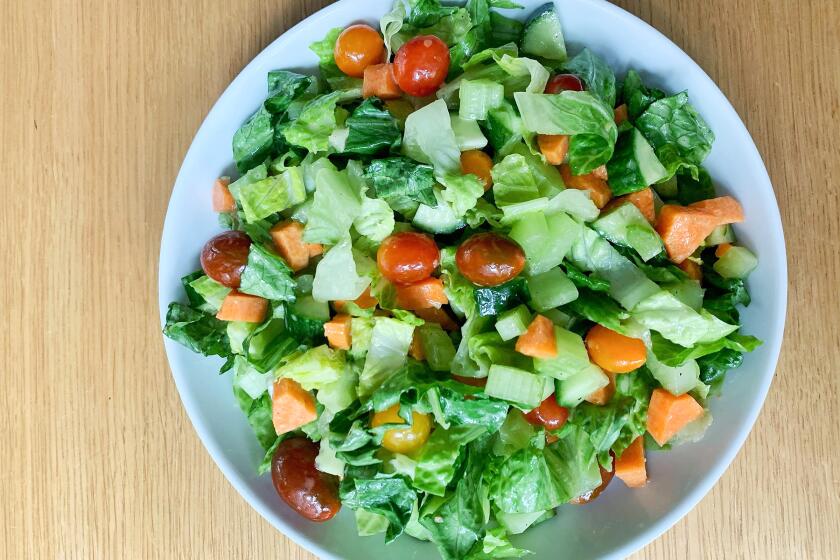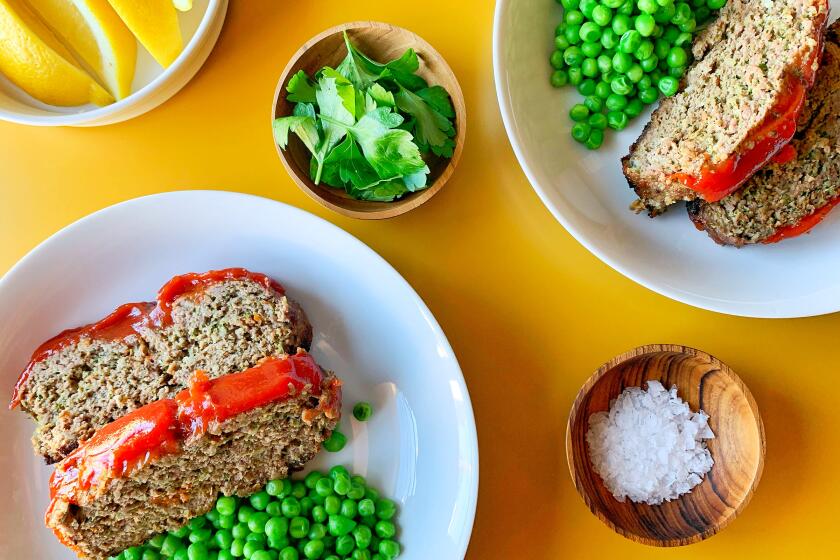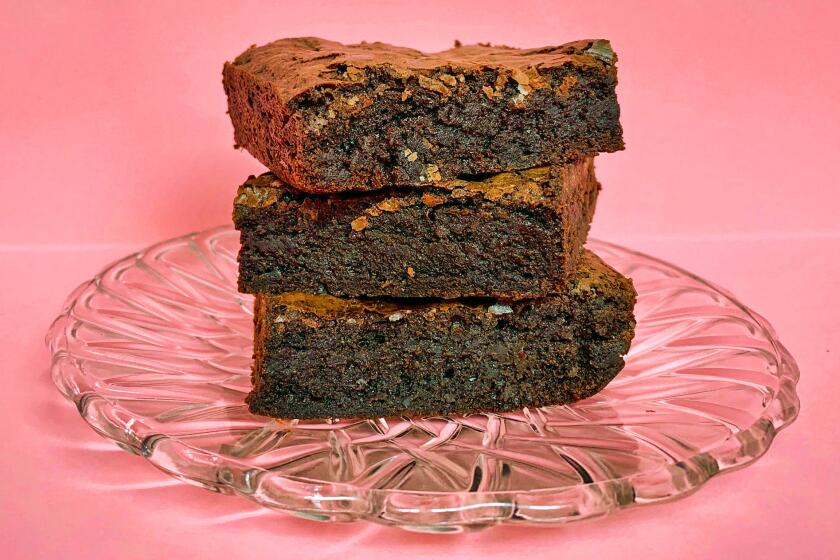The science behind creating your perfect brownie
- Share via
Two months into sheltering at home, you’re no doubt a better cook than when you started. We hope How to Boil Water, our weekday series of basic techniques and simple recipes, has helped.
We want this new weekly newsletter to as well. We’re here to share inspirations for seasonal dishes, offer recipes from L.A. chefs adapted for the home kitchen and answer your cooking questions. In these tough times, we aim to bring you happiness at the stove and a community around your meals. We have ideas for leisurely projects and simple weeknight meals ahead, starting with plans for today:
Get our Cooking newsletter.
Your roundup of inspiring recipes and kitchen tricks.
You may occasionally receive promotional content from the Los Angeles Times.
To all the moms out there, happy Mother’s Day! If you’re tired of the kitchen, take a day off and order takeout or ask your crew to cook for you. Or, if you love cooking as much as I do, take time off from everything else and spend hours baking something special.
Even if you’re not a mom, you can — and should — treat yourself today and all this week with good things to eat. Nothing fancy, just easy, delicious dishes like the ones below.
Blueberry Biscuits with Rhubarb Compote
We’re into rhubarb season now. This compote is perfect for Sunday brunch blueberry biscuits, and the rest will make weekday breakfast toasts a treat.
Steamed Asparagus with Tangerine Ponzu, Daikon and Nori
It’s time for asparagus too while there’s still great citrus to be had. Combine them in this quick Japanese dish from chef Kuniko Yagi of Pikunico.
Chopped Salad With Citrus-Soy Dressing
Another way to get ready for the week is with a jar of this savory-tangy dressing. Toss a little with greens every day for an instant chopped salad lunch.
Bistro Meatloaf
Or, make this whole meatloaf and stuff leftover reheated slices between bread for a nice hot sandwich.
Flourless Fudgy Brownies
And as Mom taught us: Dessert comes last. Bake these special treats for her today and make an extra batch for yourself.
Ask the cooks
Speaking of brownies, here’s a question from a reader:
For a chocolate brownie recipe, can you please educate me on flavor/texture differences between using cocoa powder exclusively or a combination of melted chocolate and natural or Dutch-processed cocoa powder?
As a baker’s percent, what is the recommended mix of chocolate (cocoa powder or chocolate plus powder)?
Thank you very much.
— Gary Gold
Brownies made exclusively with cocoa powder tend to be softest in the center with a candy-ish, chewy top crust and a more intense chocolate flavor. That’s because cocoa powder is ground from cocoa nibs that have had most of the fat from cocoa butter removed first. Actual butter then serves as the fat in the recipe, which yields more tenderness. And more sugar is added for sweetness, which translates to that candy-like chew.
Both natural and Dutch-processed cocoa powders have no added sugar, so they taste purely of deep, dark chocolate. Natural powder hasn’t been alkalized, so its acidity delivers a fruity, complex and strong chocolate bitterness, which is tamed by sugar in baking. Dutch-processed cocoa is treated with chemical alkalis to reduce that acidity and results in a toasty, nutty taste and much darker color.
Chocolate, whether unsweetened, bittersweet or semisweet, includes cocoa butter, which adds richness to the resulting brownies. Without the need for additional butter, the center ends up firmer and, depending on the technique, that can mean cakey or fudgy. Bitter- and semi-sweet chocolate are processed with finely milled sugar too, so the resulting brownies develop sweetness without extra chewiness.
There is no one recommended ratio of cocoa powder to chocolate for brownies. In fact, the possibilities are nearly endless. You can use one or the other or both, depending on your preferences for chocolatey-ness, sweetness, tenderness, chewiness, richness.
As a general rule, the less fat and sugar there are in the starting ingredients, the more you need to add to the brownie batter in the form of butter and sugar. Cocoa powder has no sweetness and nearly no fat; chocolate’s sweetness decreases and its fat increases as the percentage of cacao goes up.
You may have found the brownie formula you like best already. If not, start with a recipe that comes close, then tweak it little by little to get it where you want it to be.
Have a cooking question?
Eat your way across L.A.
Get our weekly Tasting Notes newsletter for reviews, news and more.
You may occasionally receive promotional content from the Los Angeles Times.
